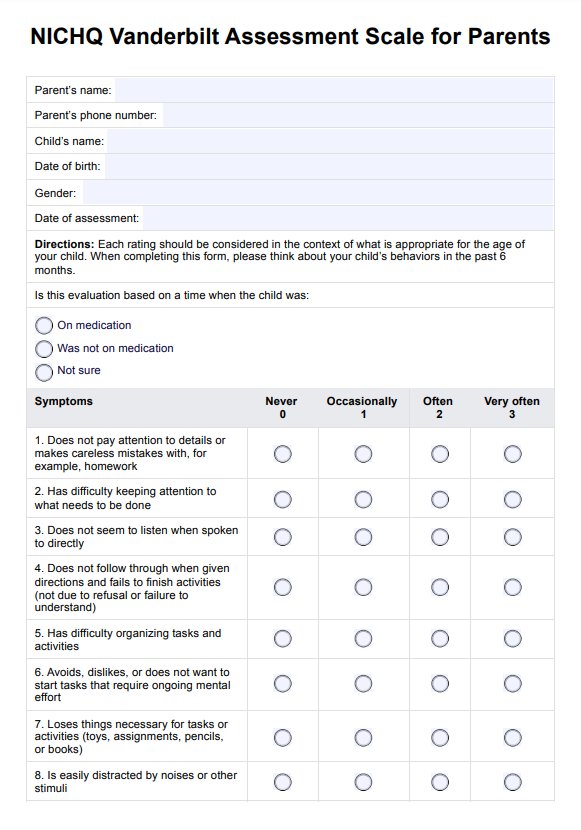The NICHQ Vanderbilt Assessment Scale was designed for developmental and behavioral pediatrics to assess ADHD presence in children ages 6-12.

The NICHQ Vanderbilt Assessment Scale for Parents
Access a free NICHQ Vanderbilt Assessment Scale for Parents. Download the template to assess ADHD in children.
The NICHQ Vanderbilt Assessment Scale for Parents Template
Commonly asked questions
Yes. This assessment scale for parents has two forms: one for the initial assessment and the other for follow-ups based on the DSM IV criteria. After diagnosis, the follow-up scale will be used. It's also much shorter than the initial assessment scale.
During your appointment, provide parents or guardians with the NICHQ Vanderbilt Assessment Scale to address concerns about their child's ADHD. They can answer immediately or take it home for completion before the next appointment. Early assessment enables effective planning for the child's long-term benefit.
EHR and practice management software
Get started for free
*No credit card required
Free
$0/usd
Unlimited clients
Telehealth
1GB of storage
Client portal text
Automated billing and online payments











